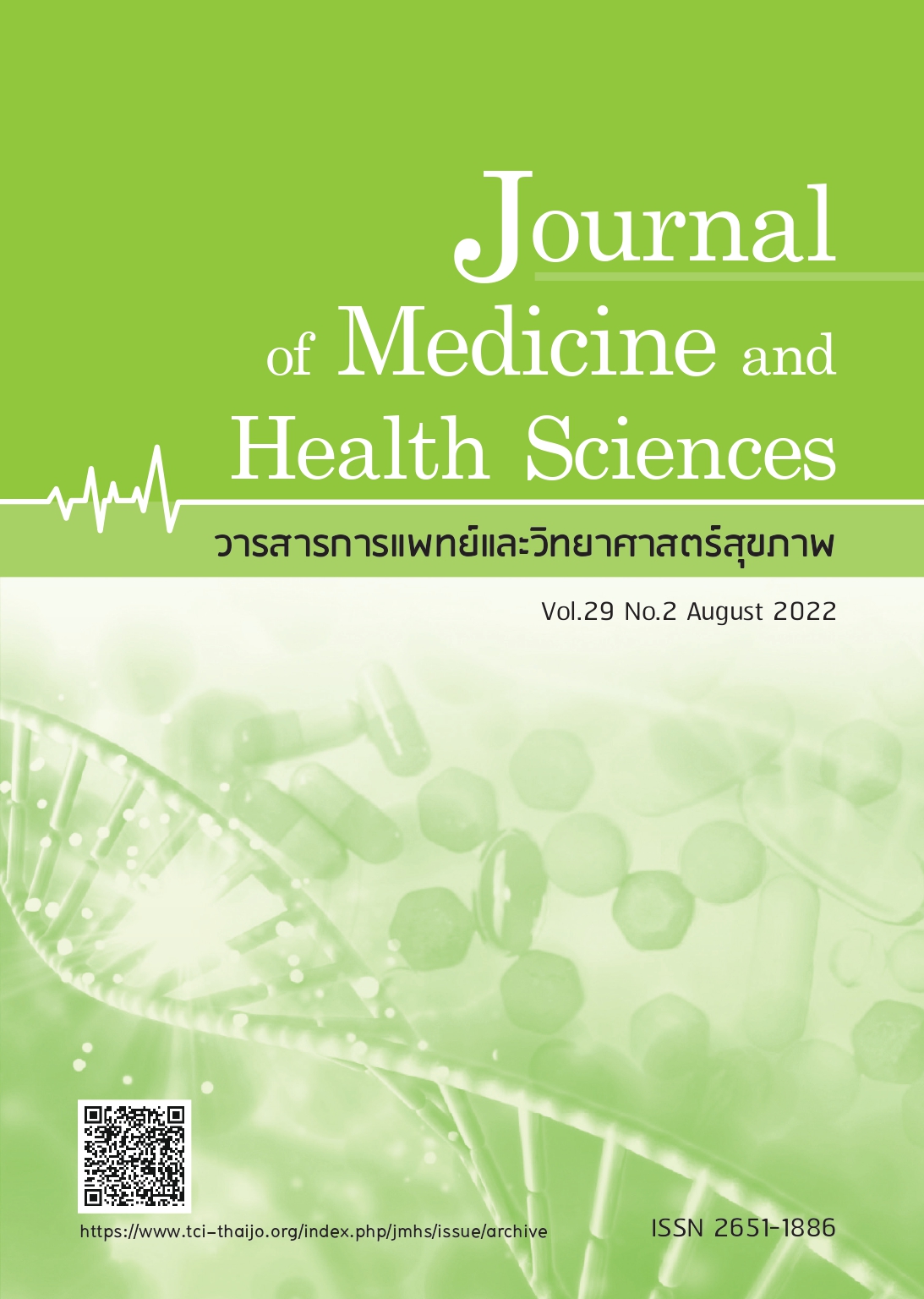Study of the risk of bone breakthrough in C2 during trans-laminar screw fixation in Thai cadavers
Keywords:
rigid fixation, axis bore, vertebral artery injury, bony breakthroughAbstract
Abstract
The rigid fixation of the axis is required in atlanto-axial fixation or for the incorporation of the C2 into the sub-axial constructs. Many technically demanding techniques have been used, but put the vertebral artery at risk of injury. The novel technique bilaterally crossed the C2 laminar screws by Wright, et al. 2008 lowered the risk of vertebral artery injury during C2 fixation. However, recent studies have mostly been conducted on Caucasian populations. As imaging studies of the Thai patients revealed smaller-sized C2 when compared to other ethnicities. It may lead to complications while applying the C2 laminar screws among the Thai population. A descriptive study of the safety was conducted to evaluate if bilaterally crossing the C2 laminar fixation can be safely applied in the Thai population. Among 60 cadavers from the Faculty of Medicine at Srinakharinwirot University, 120 laminas were recruited. The cadavers were randomly assigned an orthopedic surgeon or resident to install the trans-laminar screw for each side, according to technique of Wright, et al. with 3.5 x 30 mm poly-axial screws. The data on cadavers included age, gender, underlying diseases, and the performance, size and length of the screws used, and the complications were documented and analyzed. Of the 120 lamina screw fixations applied; 11 incidences from 120 lamina (9.2%) of breakage occurred, and one instance of a screw violating the vertebral foramen(1/120 =0.8%). The rate of bony breakthrough was higher in the resident group, but it was not statistically significant (-15.29-5.29, p=0.341). The bilaterally crossing C2 laminar screws of Wright, et al. could be reproduced and applied in Thai cadavers with a complication rate of 9.2% in the study.
References
Wright NM. Posterior C2 fixation using bilateral, crossing C2 laminar screws: case series and technical note. J Spinal Disord Tech 2014;17:158-62.
Brooks AL, Jenkins EB. Atlanto-axial arthrodesis by the wedge compression method. J bone Joint Surg (Am) 1978;60:279-84.
Dickman CA, Sonntag VK, Papadopoulos SM et al. The interspinous method of posterior atlantoaxial arthrodesis. J Neurosurg 1991;74:190-8.
Jenneret B, Magerl F. Primary posterior fusion C1/2 in odontoid fractures: indications, techniques, and results of transarticular screw fixation. J Spinal Disord 1992;5:464-75.
Dorward IG, Wright NM. Seven years of experience with C2 translaminar screw fixation: clinical series and review of literature. Neurosurgery 2011;68:1491-9.
Nakanishi K, Tanaka M, Sugimoto Y, et al. Application of laminar screws to posterior fusion of cervical spine: Measurement of the cervical vertebral arch diameter with a navigation system. Spine (Phila Pa 1976) 2008;33:620-3.
Saetia K, Phankhongsab A. C2 anatomy for translaminar screw placement based on computerized tomographic measurements. Asian Spine J 2015;9;205-9. http://dx.doi.org/10.4184/asj.2015.9.2.205.
Laopreeda K, Korsuntirat T. Lamina morphology of axis for safety translaminar screws fixation in Thai populations [Internet]. He01.tci thaijo.org. 2019 [cited 7 November 2020]. Available from:https://he01.tci-thaijo.org/index.php/jmhs/article/view/185686.
Cassinelli EH, Lee MJ, Skalak A, et al. Anatomic considerations for the placement of C2 laminar screws. Spine (Phila Pa 1976) 2006;31:2767-71.
Kim YJ, Rhee WT, Lee SB, et al. Computerized tomographic measurements of morphometric parameters of the C2 for the feasibility of laminar screw fixation in Korean population. J Korean Neurosurg Soc 2008;44:15-8.
Downloads
Published
How to Cite
Issue
Section
License

This work is licensed under a Creative Commons Attribution-NonCommercial-NoDerivatives 4.0 International License.



